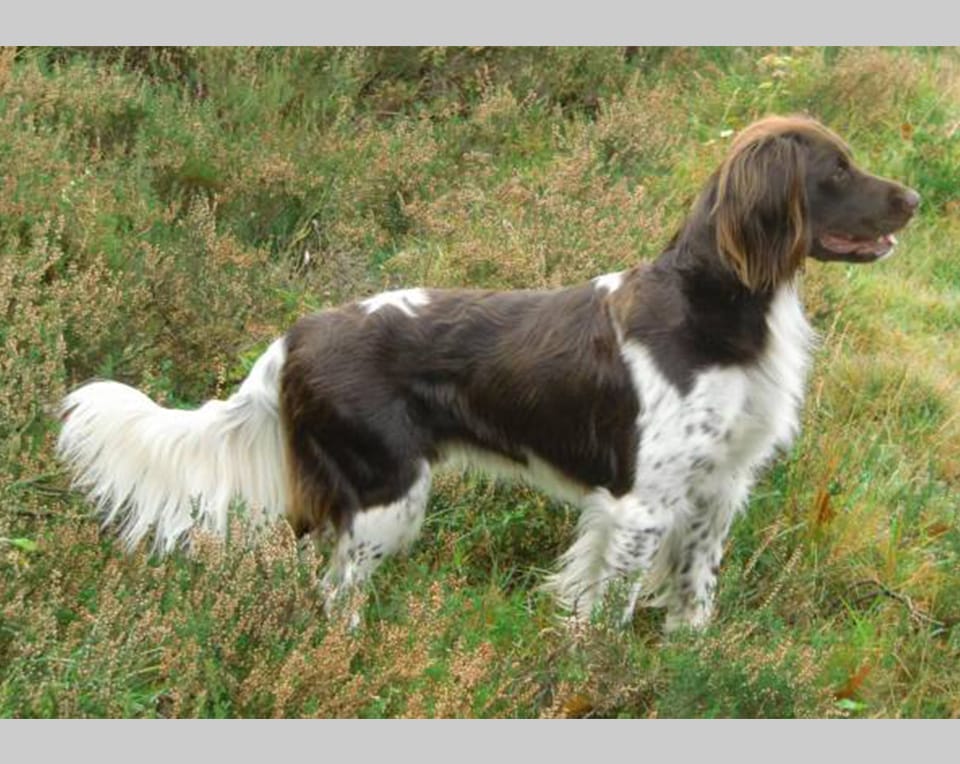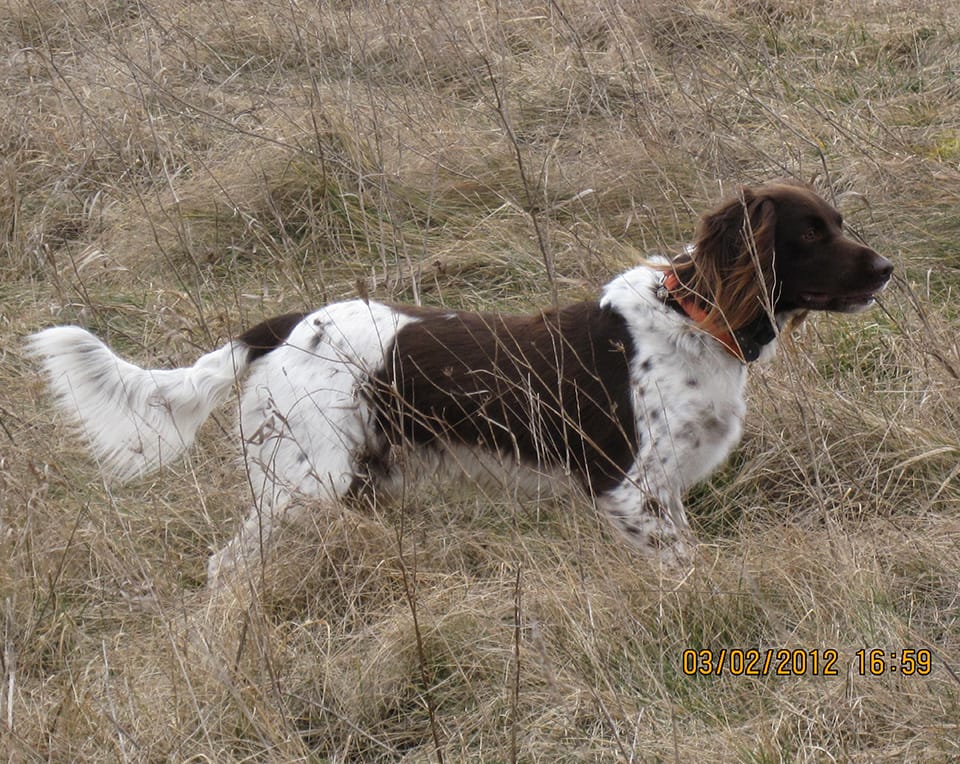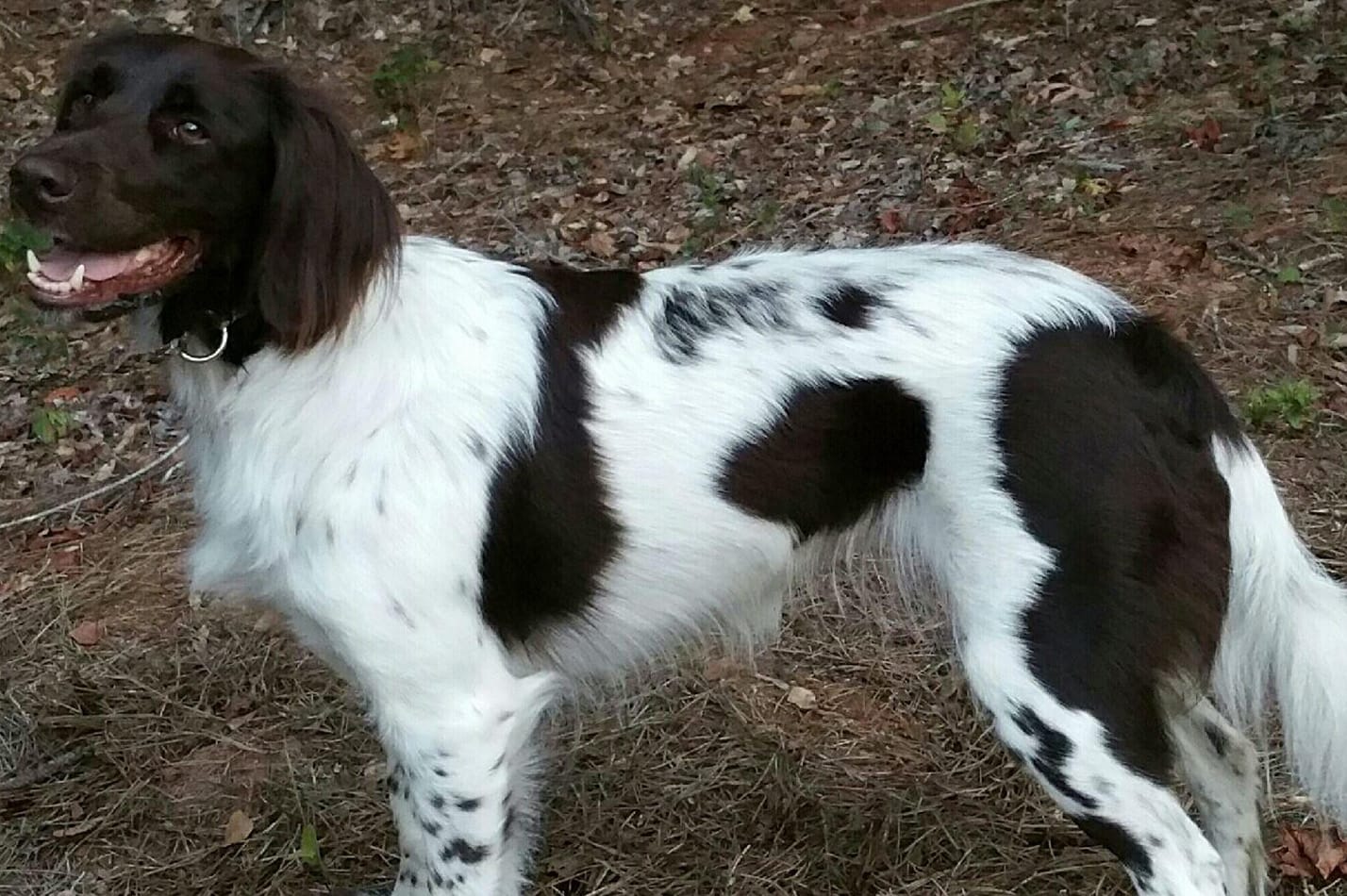Small Munsterlander Breed
General Information
Type: Versatile Gun Dog
Description: The Small Munsterlander is believed to be developed from a cross of the Brittany and the German Long-haired Pointer of the 20th century. Small Munsterlander Pointers are well-balanced dogs that love to hunt and please their owners. They have medium length coat, which comes in variety of shades and markings due to their history. They have “the setter’s build and the spaniel’s head”, making them a handsome choice for any owner.
Height: 19 – 22 inches.
Weight: 40 – 60 lbs. on the average.
Colors: Liver and White or Roan colors with ticking.
Coat: Moderately long, dense, and sleek with feathering.
Temperament: Small Munsterlanders are an intelligent, faithful breed that is very eager to please. They love to be with their owners and are very family-oriented. Although an outdoorsy dog, this breed does not do well kenneling, and prefers to be with the family.


General Characteristics
As described by the Small Munsterlander Club of North America
The Small Munsterlander is a medium haired versatile dog that maintains the strong hunting qualities that were found in them in the early 1900’s. Rudolf Löns described the Small Munsterlander in the following way “The little dog takes up the staunchest, intense point when encountering all game holding tight, keeping the point until the hunter arrives – then the game is flushed, the dead game is fetched, the crippled downers tracked, and securely retrieved with the utmost skill”.
The Small Munsterlander (SM) versatile and cooperative nature provides for a reliable foundation for all types of hunting. It is well suited for a variety of game, including the tracking of big game. SMs are adept at adjusting their search pattern relative to the cover conditions at hand, performing well outside of gun range in open country and reducing their range in dense cover. Under all circumstances, they remain responsive to the handler. SMs excel as bird finders before and after the shot due to their excellent noses. Many SMs point with intensity from early puppyhood, and many also honor naturally. Given their passion for retrieving, steadiness needs to be encouraged through training. Many SMs have voice on trail or scent when tracking game, which is a desirable trait especially in Europe. The hunter can hear the varied/different intonation of the dog’s voice and know what type of game it is tracking.
SMs are used for hunting, but in the off season they can also be used for agility, obedience, retrieving and hunting tests or trials. The SM is a cooperative dog that seeks to please, but also has a high prey drive and can be persistent. The SM needs regular mental stimulation and adequate exercise. If left alone in a kennel or not trained a SM can be bored and display unwanted behaviors. SMs, like many other German breeds are somewhat slow to mature and often start to show their full potential at about 2.5 years of age.
Generally, the SM is a healthy breed; however, a few cases of hip dysplasia, hypothyroidism, and seizures have been recorded. Proper adherence to the Breed Council rules of the Small Munsterlander Club of North America will assist in preventing future genetic difficulties for the breed.
The SM was introduced to North America in 1971 by Tom McDonald when he imported Elko, a male SM from Germany. In 1974 Paul and Vibeke Jensen imported Bliss, a female SM from Denmark.

